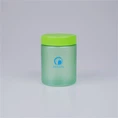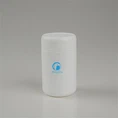High-Density Polyethylene (HDPE) is one of the most widely used plastics in the world today. Known for its versatility, strength, and resistance to chemicals and impact, HDPE is often considered a high-quality plastic. But what exactly makes HDPE stand out? And is it truly the best choice for your packaging or manufacturing needs? Let's break it down.
What is HDPE?
HDPE is a thermoplastic polymer made from petroleum. It is part of the polyethylene family and is known for its high strength-to-density ratio. Typically, it appears as a white or translucent plastic and can be molded into various shapes, such as bottles, containers, pipes, and industrial parts.
Key Advantages of HDPE
Durability
HDPE is highly resistant to impact, wear, and harsh environmental conditions. This makes it ideal for products that require long-lasting strength.
Chemical Resistance
Unlike many other plastics, HDPE does not react with strong acids, bases, or alcohols. That's why it's commonly used in chemical containers and food packaging.
Weather Resistance
HDPE can withstand both high and low temperatures without cracking, warping, or degrading, making it suitable for outdoor and cold-chain applications.
Food Safety
HDPE is approved by the FDA for direct food contact. It is non-toxic, odor-free, and does not leach harmful chemicals, making it a preferred material for food and beverage containers.
Lightweight Yet Strong
Despite being lightweight, HDPE offers high tensile strength, which means it can support weight and pressure without breaking.
Recyclability
HDPE is one of the most recyclable plastics. It is marked with recycling code #2 and can be reprocessed into new products like piping, plastic lumber, or new containers.
Limitations to Consider
No material is perfect. While HDPE is strong and chemically resistant, it does have some drawbacks:
Poor UV Resistance (without additives): Prolonged exposure to sunlight may cause degradation unless UV stabilizers are added.
Low Heat Tolerance: HDPE melts at around 130°C (266°F), so it's not suitable for high-heat applications like oven use.
Common Applications
Food and medicine packaging, health food packaging
Food and beverage packaging (milk jugs, juice bottles)
Household chemical containers (detergents, cleaners)
Cosmetic bottles and personal care containers.
















